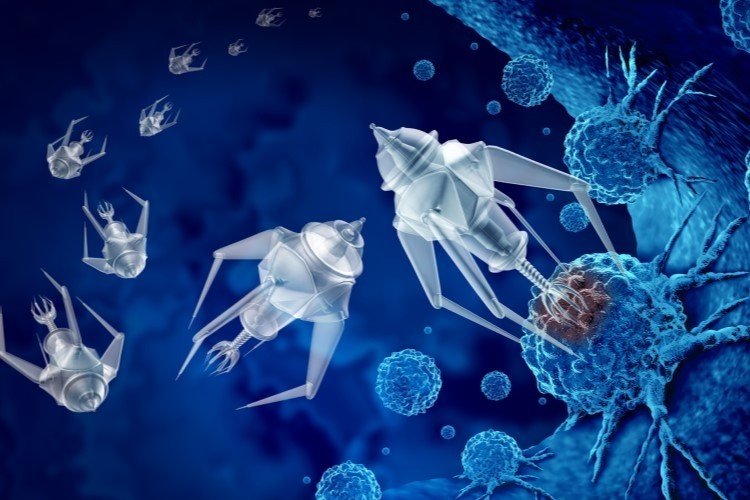Exploring the potential of nanorobots in medicine – how tiny machines could be used to diagnose and treat diseases at the cellular level.
The Future of Medicine===
The advancements in technology have opened up many new possibilities in the field of medicine. One such development is the emergence of nanorobots or nanobots – tiny machines that can be used to diagnose and treat diseases at the cellular level. These tiny robots show immense potential in revolutionizing the way we diagnose and treat diseases. In this article, we will explore what nanorobots are and how they can be used in medicine.
What are Nanorobots?
Nanorobots are tiny robots that are designed to operate at the nanoscale – a scale that is unimaginably small. These robots are made of materials that can interact with biological molecules and cells. Nanorobots can be programmed to perform specific tasks such as delivering drugs to a specific location in the body or detecting and removing cancer cells.
Nanorobots are typically made of materials such as carbon, gold, and silicon. These materials have unique properties that make them suitable for use in nanorobotics. Carbon nanotubes, for example, have high strength and flexibility, while gold nanoparticles have excellent biocompatibility.
Diagnosing Diseases with Nanorobots
One of the most promising applications of nanorobots is in the diagnosis of diseases. Nanorobots can be designed to detect biomarkers – specific molecules that indicate the presence of a disease. These biomarkers can be present in blood, urine, or other bodily fluids.
Nanorobots can be programmed to detect these biomarkers and report their presence to a medical professional. This can help in the early detection and diagnosis of diseases such as cancer and Alzheimer’s.
Treating Diseases with Nanorobots
Another promising application of nanorobots is in the treatment of diseases. Nanorobots can be designed to deliver drugs to specific locations in the body. This can help in reducing the side effects of drugs and increasing their efficacy.
Nanorobots can also be used to perform minimally invasive surgeries. These robots can be inserted into the body through a small incision and can perform surgeries without the need for open surgery.
Nanorobots and Cancer Treatment
One of the most exciting applications of nanorobots is in the treatment of cancer. Nanorobots can be designed to specifically target cancer cells and destroy them. These robots can be programmed to recognize and attach themselves to cancer cells, and then deliver drugs or other therapeutic agents to destroy them.
Nanorobots can also be used to deliver heat or light to cancer cells, destroying them without damaging the surrounding healthy cells. This can help in reducing the side effects of cancer treatment and improving patient outcomes.
Nanorobots and Precision Medicine
Precision medicine is an emerging field of medicine that aims to tailor treatments to individual patients based on their genetic makeup, lifestyle, and other factors. Nanorobots can play a crucial role in precision medicine by delivering drugs or other therapeutic agents to specific locations in the body.
Nanorobots can also be used to monitor the effectiveness of treatments and make adjustments based on the patient’s response. This can help in improving patient outcomes and reducing the cost of healthcare.
Challenges and Limitations of Nanorobotics
While the potential of nanorobots in medicine is enormous, there are also several challenges and limitations that need to be addressed. One of the biggest challenges is the development of safe and biocompatible nanorobots that can operate in the body without causing harm.
Another challenge is the need to develop precise and reliable control mechanisms for nanorobots. These robots operate at the nanoscale, which makes it difficult to control their movements and interactions with biological molecules.
Conclusion: The Promise of Nanomedicine
Nanorobots show immense promise in revolutionizing the field of medicine. These tiny machines can be used to diagnose and treat diseases at the cellular level, reducing the side effects of treatment and improving patient outcomes. While there are still several challenges and limitations that need to be addressed, the potential of nanorobotics in medicine is enormous. With further research and development, nanorobots could play a crucial role in the future of medicine, improving the lives of millions of people around the world.

